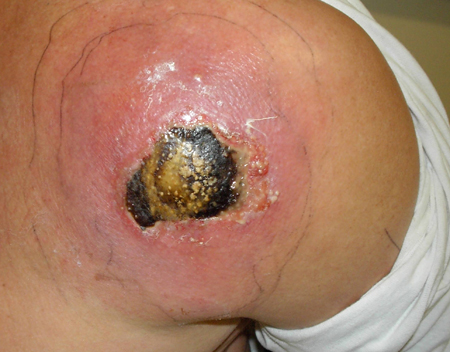
One of the things that’s changed a lot from when I first started practicing medicine is people show up every day to the emergency room for mosquito and spider bites. The local news has done a number on you, as now everyone is afraid of MRSA.
Methicillin-resistant Staph Aureus (MRSA) is a bacterial infection that’s resistant to the penicillin family of drugs that we used for decades to treat many infections. Staph Aureus itself is a bacteria akin to flipping a light switch. Normally, it resides within us (approximately 30% of us have it in our nostrils but only 2% of us carry the MRSA variety), not causing any problems, but it is also the source of many dangerous and life-threatening illnesses if it enters your bloodstream.
Over the last 50 years of treating Staph infections, resistance to many different antibiotics has occurred, meaning that when a serious infection occurs, it’s potentially very harmful. The emphasis there should be on potentially. Most MRSA infections are community-acquired skin infections that resemble a spider or other insect bite but are still mild and are treatable with different antibiotics than historically used. Regular Staph and MRSA infections are even more likely to occur in those institutionalized (i.e. in hospitals, nursing homes, etc.) and have tubes and wounds. Consider and discuss the risk with your physician when you see someone on a breathing device, a urinary catheter, needing gauze for surgical wounds or on feeding tubes. Amazingly, MRSA causes approximately 60% of hospital-acquired Staph infections now.
My primary goal today is to inform you of what you need to know to prevent obtaining these infections and when to be especially diligent in seeking treatment. It’s really a simple task of maintaining hygiene. Just prevent that ‘light-switch’ from flipping to the on position and most times you’ll be ok.
1. Staph is everywhere. You can best protect yourself by simply practicing good hygiene. Wash your hands early and often.
2. MRSA is spread by contact. Don’t be so quick to feel and squeeze on someone’s (or your own) boil. Wash your hands before and after such contact. Don’t share towels or razors.
3. Keep any cuts, scratches, nicks or scrapes covered until healed.
If you do see or develop signs of a skin infection (redness, warmth, tenderness, pain and possibly discharge from the wound site), it’s worth contacting your physician to see if s/he’d like to start antibiotics or drain a possible abscess.
So… don’t be afraid, be smart. Prevention is key.

Copyright © 2013 · Sterling Initiatives, LLC · Powered by WordPress

Hi, Dr.! I just read your MRSA blog (09/08/13) with great enthusiasm because I had 2 diagnosed MRSA infections in 2013. I was outraged, of course, because I take great effort to follow good hygiene practices, especially when I visit my Mother in her SNF, but it found me, nonetheless. It was very upsetting because the first one was on my face and the 2nd one was on my left breast. It was particularly frightening bc it kept morphing into new manifestations, sometimes within the same day; both went on for a very long time. Once,it opened into 6 vein-looking openings and then finally one giant opening that I could have put a finger into. And thus, both scars remain.
I have not been retested for colonies in my nose and so far so good, but no one ever seems to be able to answer this one question: does MRSA remain in the body like some viruses (cold sores, for example; or other Herpes) and if it does, does anyone know for how long?
Thank you!
Hi Joyce! MRSA is everywhere, including on you. However, it’s presence doesn’t necessary mean you’ll be infected. Your best protection is to ensure appropriate hygiene and protection of your skin. There are multiple MRSA-like infections that are ready to pounce on you if you become otherwise ill or if your immune system becomes compromised. Thanks for your comment and for following Straight, No Chaser.